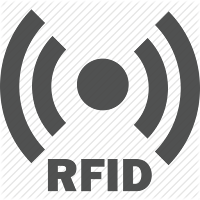Ubiquitous Computing
Abstract:
This article discusses the challenges in computer systems research posed by the emerging field of ubiquitous computing also called pervasive computing, which is the emerging domain that implements communication technologies into day-to-day life activities. This article provides a classification of the research areas on the ubiquitous computing paradigm. This article also discusses about different waves of computing, its classification and some projects can be implemented.
Introduction:
Mark Weiser coined the phrase "ubiquitous computing" around 1988, during his tenure as Chief Technologist of the Xerox Palo Alto Research Center (PARC). Both alone and with PARC Director and Chief Scientist John Seely Brown, Weiser wrote some of the earliest papers on the subject, largely defining it and sketching out its major concerns.
It is a concept in software engineering and computer science where computing is made to appear anytime and everywhere. In contrast to desktop computing, ubiquitous computing can occur using any device, in any location, and in any format. A user interacts with the computer, which can exist in many different forms, including laptop computers, tablets and terminals in everyday objects such as a refrigerator or a pair of glasses. These technologies to support ubiquitous computing include Internet, advanced middleware, operating system, mobile code, sensors, microprocessors, new I/O and user interfaces, networks, mobile protocols, location and positioning and new materials.
This paradigm is also described as pervasive computing, ambient intelligence, or "everyware". Each term emphasizes slightly different aspects. When primarily concerning the objects involved, it is also known as physical computing, the Internet of Things, haptic computing, and "things that think". Rather than propose a single definition for ubiquitous computing and for these related terms, a taxonomy of properties for ubiquitous computing has been proposed, from which different kinds or flavors of ubiquitous systems and applications can be described.
Ubiquitous computing touches on a wide range of research topics, including distributed computing, mobile computing, location computing, mobile networking, context-aware computing, sensor networks, human–computer interaction, and artificial intelligence.
Waves of Ubiquitous Computing
Main Frame - (Many Person-One Computer)
Mainframe computers (colloquially referred to as "big iron") are computers used primarily by large organizations for critical applications, bulk data processing, such as census, industry and consumer statistics, enterprise resource planning, and transaction processing.
The term originally referred to the large cabinets called "main frames" that housed the central processing unit and main memory of early computers. Later, the term was used to distinguish high-end commercial machines from less powerful units. Most large-scale computer system architectures were established in the 1960s, but continue to evolve.
Personal Computer - (One Person-One Computer)
In its more general usage, a personal computer (PC) is a microcomputer designed for use by one person at a time. Prior to the PC, computers were designed for (and only affordable by) companies who attached terminals for multiple users to a single large computer whose resources were shared among all users.
Ubiquitous Computing - (One Person-Many Computer)
Ubiquitous computing (or "ubicomp") is a concept in software engineering and computer science where computing is made to appear anytime and everywhere. In contrast to desktop computing, ubiquitous computing can occur using any device, in any location, and in any format.
The next picture shows the overview of what these three waves actually are.
Key elements of Ubiquitous Computing:
Ubiquitous Networking
Ubiquitous Computing will enable diverse wireless applications, including monitoring of pets and houseplants, operations of appliances, keeping track of books and much more.
The Ubiquitous Networking will allow you to connect and access your various devices anytime anywhere and at any cause until you are active in the network using various means like Internet, sensors and human interaction.
Ubiquitous Sensing
A ubiquitous sensor network (USN) is one that connects all possible sensors in a given network or environment which, theoretically, could be global. Typically, the sensors in a USN are smart sensors, which take input from the physical environment and use built-in compute resources to perform predefined functions upon detection of specific input, and then process data before passing it on.
A ubiquitous sensor network taps into the communications equipment in sensors in its defined network or range and collects the data from sensors as well as controlling actuators. Wireless sensor area networks (WSAN), the previous generation of sensor networks, can be easily incorporated into ubiquitous sensor networks.
Ubiquitous Access
Ubiquitous Access represents the ability for a cloud service to be widely accessible. Establishing ubiquitous access for a cloud service can require support for a range of devices, transport protocols, interfaces, and security technologies. To enable this level of access generally requires that the cloud service architecture be tailored to the particular needs of different cloud service consumers.
Ubiquitous Middleware
Middleware product families provided by Ubiquitous Corporation are not dependent on a particular OS or platform. Therefore, these products can be immediately installed as additional components onto the platform being developed by a customer, improving development efficiency and also leading to a reduction in overall man-hours (some CPUs and OSs require products to be ported). Ubiquitous Corporation provides middleware product families consisting of database-related, security-related, or other types of carefully selected middleware that would take longer if developed in-house. In addition, these middleware product families also feature 'compactness', 'efficiency' and 'high-speed', which are common to Ubiquitous products, and can achieve good performance even in an environment with extremely limited resources such as ROMs and RAMs.
Methodology:
The paradigm of pervasive computing describes ubiquitous computing environments that provide anytime and anywhere access to information services while making the presence of the system invisible to the user. Pervasive computing envisioned by Mark Weiser emerged at the conjunction of research and development in a number of areas which include embedded and devices and systems, wireless communications, and distributed, mobile and context-aware computing.
The Fig.1 summarizes five core properties of the ubiquitous computing solutions. It is not required for ubiquitous computing solutions to fully support all five properties. It may not be useful or usable in many cases in practice to support all five core properties.

How it Works?
Probably the most “buzzword” worthy term that is on most people’s and organization’s minds is “the internet of things”. There are thousands of programmers and organizations everywhere trying to figure out what this means to them and how to monetize it. We are seeing some of this trickle to market as we have embedded processing and/or internet access in refrigerators, coffee makers, washing machines, lawn mowers, vacuums and more.
Ubiquitous computing may be seen to consist of many layers, each with their own roles, which together form a single system:
Layer 1: Task Management layer
Monitors user task, context and index
Map user's task to need for the services in the environment
To manage complex dependencies
Layer 2: Environment Management layer
To monitor a resource and its capabilities
To map service need, user level states of specific capabilities
Layer 3: Environment layer
To monitor a relevant resource
To manage reliability of the resources
The biggest challenge associated with this revolution right now is consumer privacy and overall security. Many of these devices are seriously lacking in their ability to adequately provide security for their access and the information they may contain.
System Architecture:

Fig. 2. System Architecture (Ubiquitous Computing)
Examples of Ubiquitous Computing
1. One of the earliest ubiquitous systems was artist Natalie Jeremijenko's "Live Wire", also known as "Dangling String", installed at Xerox PARC during Mark Weiser's time there. This was a piece of string attached to a stepper motor and controlled by a LAN connection; network activity caused the string to twitch, yielding a peripherally noticeable indication of traffic. Weiser called this an example of calm technology.
2. The Unified Computer Intelligence Corporation has launched a device called Ubi – The Ubiquitous Computer that is designed to allow voice interaction with the home and provide constant access to information
3. The Smart Space (SS) Lab was established as one example of the ubiquitous computing environment. This laboratory is currently involved in the following areas of research in order to simplify the creation of this type of environment in convenient locations.
4. Ubiquitous Applications: Application software is being developed as a service technology in the smart environment that uses service platforms and mobile platforms
Challenges in Ubiquitous Computing
• Privacy - How can I trust the others
The first challenge in front of a ubiquitous system is privacy, because in ubiquitous environment you can access your data, devices, applications and other resources anytime anywhere so it is necessary to provide ubiquitous environment with high security so that you can feel secure. This is because, while providing ease of access to the resources it may happen that someone steals your data, so in order to avoid this we have to come up with some extra security. To achieve this, it is possible to use Radio Frequency Identification, QR Codes also called Visual Bar Codes and Location for identification.
• Reliability / Availability - Always on network
The name “Ubiquitous Computing” itself suggests that, it provides services anytime, anywhere. To achieve this, it is necessary to provide reliable and continuous network services. To use the services of ubiquitous computing your devices must be connected to some kind of network like internet. Failure of the network connectivity can cause to loss of reliability and availability.
• Smart Sensors
Use of the sensors allows ubiquitous computing to listen from other resources, in short it give systems eyes and ears. Smart Sensor are supposed to give and automatic measurement and awareness to ubiquitous network. Sensor is not a problem for implementation of Ubiquitous network, the challenge is smart sensors are still a subject of research and development.
• Social Impact
The Ubiquitous computing is going to leave a huge impact on social life as it is rapidly growing. The use of Ubiquitous Computing is increasing because of its simplicity and ease of use. People can do anything from anywhere which is caused its popularity and everyone is adopting it and its rate of use is increasing exponentially.
Conclusion:
Pervasive computing has emerged as multi-disciplinary area of research and development. This paper presented a survey of ubiquitous computing research. We provided a classification of the research areas on the ubiquitous computing paradigm. This paper also explains the system architecture, Stages of computing also called waves of computing and examples of ubiquitous computing. It also explains the working of a ubiquitous computing system with help of its key elements and their applications.
References:
[1]. Stan Kurkovsky, Member, IEEE, “Pervasive Computing: Past, Present and Future”, IEEE Pervasive Computing Document, vol. 5, Apr-Jun 2006, pp. 8-11.
[2]. Vishal Meshram, Vidula Meshram, Kailas Patil, “A SURVEY ON UBIQUITOUS COMPUTING”, 2016, DOI: 10.21917/ijsc.2016.0157
[3]. M. Satyanarayanan, “Pervasive Computing: Vision and Challenges,” IEEE Personal Communications, 2001, pp- 13-03




Aradığım cevabı burada buldum, süpersiniz.
ReplyDelete